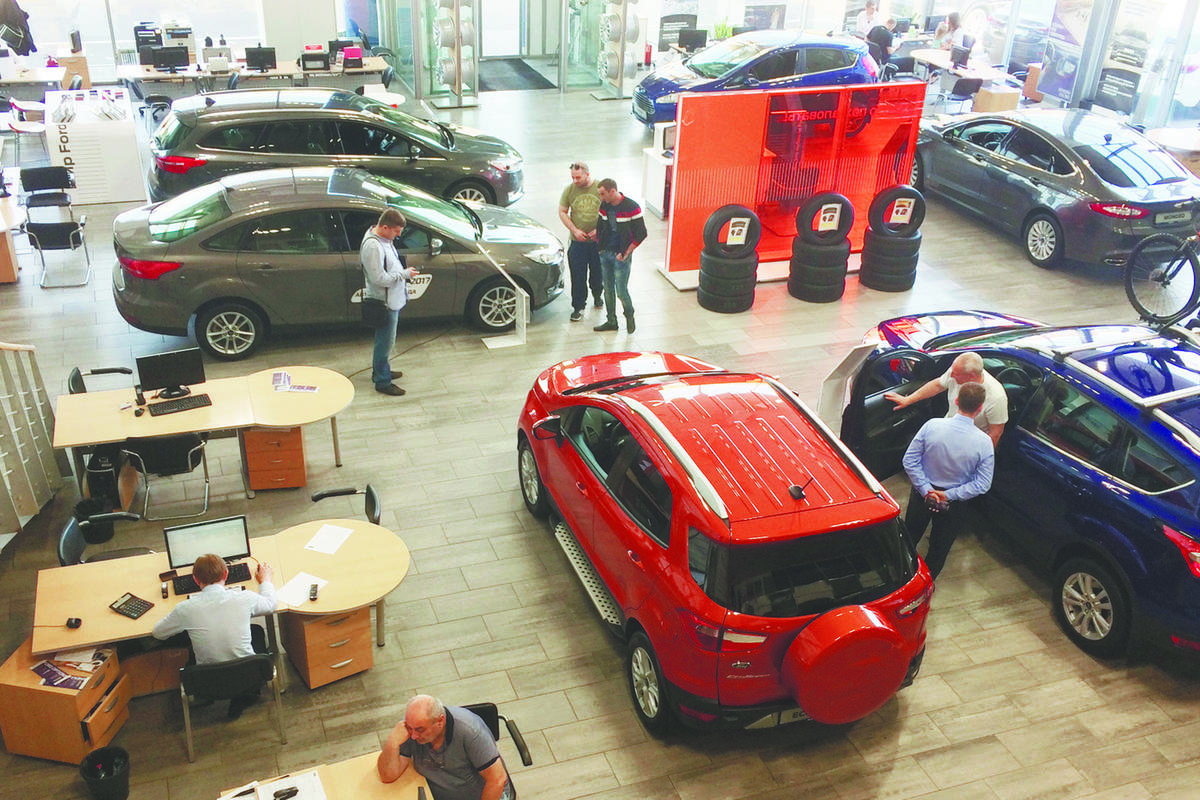The car loan market has hit the brakes: Russians have forgotten about car dreams
[ad_1]

For the second month in a row, the car loan market has been declining both in monetary volume and in quantitative terms. The drop was due to an increase in the cost of cars and an increase in the key rate of the Central Bank. Where the fresh winds blew and in which direction car loan rates will go in the fourth quarter, MK figured out.
According to Frank RG, in the first month of autumn, the Russian car loan market decreased in monetary terms by 8.66% compared to August, to RUB 143.5 billion. In quantitative terms, sales fell by 7.16%. The average bill during September for the first time in 8 months decreased by 1.62%, to 1.46 million rubles.
The average rate on loans for the purchase of vehicles in the top 15 Russian banks issuing car loans in the third quarter of 2023 increased by 2.12 percentage points and amounted to 18.77% per annum, according to a Banki.ru study. The cheapest loan today is issued at a rate of 16.2% per annum, and the most expensive – at 22.7%.
Banks continue to offer the most attractive conditions when applying for a car loan with documentary proof of income. The average rate if this condition is met was 18.67% per annum in September. As for the types of vehicles, the highest average rates were recorded for loans for the purchase of motor vehicles. For new vehicles its value was 21% per annum, and for used vehicles – 22.85% per annum.
The market decline did not surprise experts. The peak volume of car loans occurred in mid-2023, when there was a significant increase in car imports.
Citizens were preparing for higher prices against the backdrop of a falling ruble exchange rate. According to Alexey Bessonov, head of the product policy department at Rosbank Auto, the decline in car loan sales in September is due to both the slowdown in sales of the new car market and the decline in the used car segment due to the continued rise in car prices and a change in the recycling fee rate from August 1 . A significant increase in the key rate of the Central Bank of the Russian Federation and, as a result, an increase in the cost of loans also had a negative impact on the volume of car loans.
“In September, car issuances decreased slightly,” Anatoly Perfilyev, junior director for bank ratings at the Expert RA agency, told MK. At the same time, according to him, sales of used cars have declined faster than new ones, as the population increases the service life of their cars. “The departure of Korean automakers, Japan’s ban on the export of cars and the government’s restriction of alternative imports will stimulate sales of domestic brands that are actively supported by the state. The expansion of the Chinese automobile industry will continue, incl. because factories for the production of Chinese auto brands are opening in Russia,” Perfilyev emphasized.
According to Bessonov, loans for new cars are now being issued more often due to the recovery of the market itself and the emergence of new brands in Russia. At the same time, the interest of sellers in the segment of used cars does not subside and will confidently remain high in future periods as a tool for income and replenishment of car dealers’ warehouses. “A positive effect would be the resumption of the state program of preferential car loans, but at the moment there is no confidence in its extension,” the banker noted.
According to the Managing Director of Sovcombank Artem Yazykov, the demand for car loans was supported by rising exchange rates and customer concerns about adjustments to price lists for new cars (used cars also respond, but with a delay of 2-3 months). Despite this, there have been no significant changes in the most popular programs yet. “Loan programs subsidized by manufacturers and auto installment plans are primarily popular. The picture on the used car market is still stable,” Yazykov added.
Note that the car lending segment in Russia is actually a B2B market, which is controlled by only a few banks. Unlike classic consumer lending, the competitive environment plays an important role here, which often forces players to act more carefully.
Thanks to the presence of joint programs with automakers, banks have so far managed to offer customers affordable car loans and preferential rates. “There is a growing demand for programs with deferred payment, which makes it possible to reduce the burden on the monthly payment in the face of rising rates,” noted Alexey Bessonov. In his opinion, the situation on the car lending market in the fourth quarter will largely depend on further actions of the regulator, the volatility of the national currency exchange rate, as well as changes to limit “gray” imports.
Head of VTB’s Auto Lending Department Alexey Bocharnikov expects that in the fourth quarter Russians’ demand for Chinese brands will increase and by the end of the year their share could reach 70%.
According to Artem Yazykov, the level of rates in October-December will correspond to the current ones. The exception will be certain brands or models, for which at the end of the year the offer may be slightly improved, as the release of new models or generations is planned. But this will not have a strong impact on the car lending market as a whole. “The car loan segment for used cars will continue to be under pressure. Since, with rare exceptions, there are no programs to support the end buyer, and rates will remain at a fairly high level – about 18%,” the banker concluded.
Newspaper headline:
The car loan market has hit the brakes
[ad_2]
Source link






